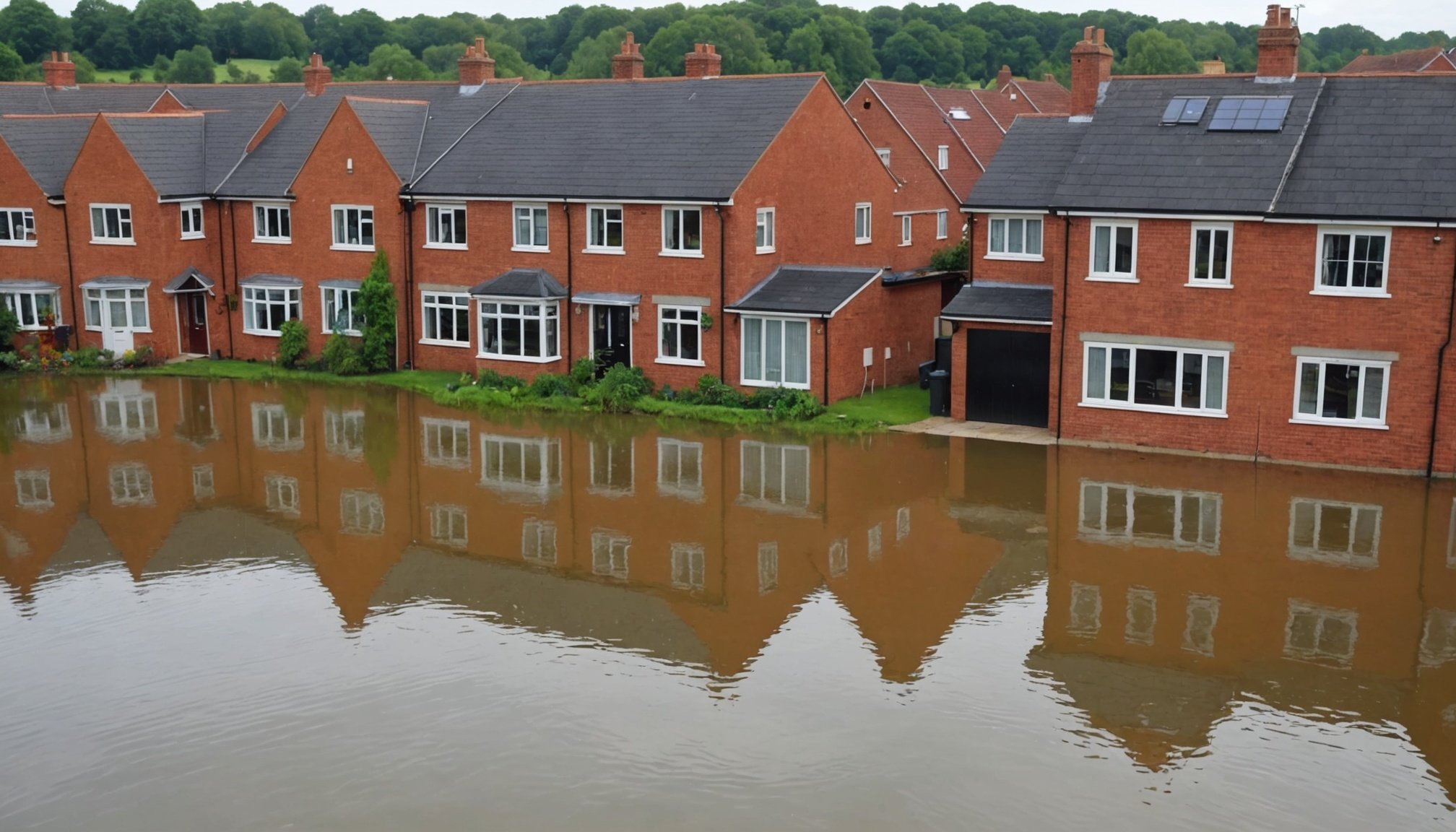Smart Strategies for Yorkshire Homeowners: Cut Flood Insurance Costs in High-Risk Areas
Living in Yorkshire, particularly in areas near rivers and coastal regions, comes with the inherent risk of flooding. This risk is exacerbated by climate change, which is leading to more frequent and severe flood events. For homeowners in these high-risk areas, managing flood insurance costs is a critical aspect of financial and environmental sustainability. Here’s a comprehensive guide on smart strategies to reduce flood insurance costs and improve flood resilience in Yorkshire.
Understanding Flood Risk and Insurance
Before diving into the strategies, it’s essential to understand the basics of flood risk and insurance.
A lire en complément : The Influence of School Catchment Areas on Property Investment Strategies in Surrey: A Comprehensive Guide
What is Flood Risk?
Flood risk is the likelihood of a flood occurring and the potential impact it could have on properties and communities. In Yorkshire, this risk is heightened due to its geography, with many areas situated near rivers and the coast. The Environment Agency plays a crucial role in assessing and managing flood risk through various projects and initiatives.
Flood Insurance: A Necessity
Flood insurance is a vital component of risk management for homeowners in high-risk areas. However, the costs can be prohibitive. According to recent reports, flood insurance rates are set to increase significantly, making it even more challenging for homeowners to afford.
A découvrir également : Exploring the Influence of UK Immigration Policy Shifts on Rental Property Demand
Nature-Based Solutions for Flood Management
Nature-based solutions are increasingly recognized as effective and sustainable ways to manage flood risk.
Natural Flood Defenses
Natural flood defenses, such as wetlands, floodplains, and dunes, can significantly reduce the impact of flooding. These natural barriers help absorb excess water, reducing the pressure on urban drainage systems.
- Wetlands: Act as natural sponges, absorbing excess water and reducing flood peaks.
- Floodplains: Allow rivers to overflow safely, reducing the risk of flooding in urban areas.
- Dunes: Protect coastal areas from storm surges and sea-level rise.
Sustainable Drainage Systems
Sustainable drainage systems (SuDS) are designed to mimic natural processes and reduce the burden on traditional drainage infrastructure.
- Green Roofs: Absorb rainwater, reducing runoff and alleviating pressure on drainage systems.
- Rain Gardens: Collect and filter rainwater, preventing it from entering the sewer system.
- Permeable Pavements: Allow rainwater to percolate through, reducing surface runoff.
Improving Water Quality and Reducing Storm Overflows
Improving water quality and reducing storm overflows are crucial for overall flood management and environmental health.
Water Company Initiatives
Water companies in the UK, including those in Yorkshire, are implementing various initiatives to improve water quality and reduce storm overflows.
- Wastewater Treatment Works: Upgrading treatment facilities to handle increased volumes during flood events.
- Sewer Network Improvements: Enhancing the capacity and resilience of sewer networks to reduce the likelihood of overflows.
- Catchment-Based Approaches: Working with local communities and farmers to reduce pollution and improve water quality in rivers and streams.
Practical Strategies for Homeowners
Here are some practical strategies homeowners in Yorkshire can adopt to reduce flood insurance costs and improve flood resilience.
Retrofitting Homes for Flood Resilience
Retrofitting homes with flood-resistant materials and designs can significantly reduce the risk of flood damage.
- Flood-Resistant Materials: Using materials like ceramic tiles, concrete, and waterproof paints to protect against water ingress.
- Elevated Electrical Outlets: Moving electrical outlets and switches to higher levels to prevent damage from floodwater.
- Flood-Proof Barriers: Installing barriers such as flood gates and doors to prevent water entry.
Community-Led Projects
Community-led projects can be highly effective in managing flood risk and reducing insurance costs.
- Community Flood Groups: Organizing local groups to work together on flood prevention and mitigation projects.
- Crowdfunding Initiatives: Raising funds through community efforts to implement local flood protection works.
- Collaborative Planning: Working with local authorities and the Environment Agency to develop and implement flood management plans.
Financial Incentives and Support
There are various financial incentives and support mechanisms available to help homeowners in high-risk areas.
Government Schemes
The UK government offers several schemes to support homeowners in managing flood risk.
- Flood and Coastal Resilience Innovation Programme: Providing funding for innovative flood protection projects.
- Property Flood Resilience (PFR) Scheme: Offering grants for homeowners to retrofit their properties with flood-resistant measures.
- Flood Re: A reinsurance scheme designed to make flood insurance more affordable for high-risk properties.
Insurance Discounts
Homeowners who implement flood resilience measures can often qualify for insurance discounts.
| Measure | Description | Potential Insurance Discount |
|---|---|---|
| Flood Gates | Installing flood gates at entrances | 10-20% |
| Flood-Proof Barriers | Installing barriers around the home | 15-25% |
| Elevated Electrical Outlets | Moving electrical outlets to higher levels | 5-10% |
| Flood-Resistant Materials | Using flood-resistant materials in construction | 10-20% |
Case Studies and Examples
York’s Duncombe Square Housing
The Duncombe Square Housing project in York is an excellent example of how sustainable and affordable housing can be designed with flood resilience in mind. This project incorporates green roofs, rain gardens, and permeable pavements to reduce the risk of flooding and improve water quality.
La Borda Cooperative Housing
La Borda, a cooperative housing project in Barcelona, though not in Yorkshire, demonstrates how community-led initiatives can achieve significant flood resilience. This project involves community members in the design and implementation of flood protection measures, ensuring a sustainable and cost-effective approach.
Action Plans and Works
Developing and implementing action plans and works is crucial for effective flood management.
Catchment-Based Plans
Catchment-based plans involve working with local communities, farmers, and water companies to improve water quality and reduce flood risk.
- Identifying High-Risk Areas: Using data and mapping tools to identify areas most vulnerable to flooding.
- Implementing Sustainable Practices: Promoting sustainable farming practices and reducing pollution in rivers and streams.
- Community Engagement: Engaging local communities in the planning and implementation process.
Storm Overflow Reduction
Reducing storm overflows is essential for maintaining water quality and reducing the risk of flooding.
- Upgrading Sewer Networks: Enhancing the capacity and resilience of sewer networks to handle increased volumes during flood events.
- Implementing Nature-Based Solutions: Using natural solutions like wetlands and floodplains to absorb excess water.
- Real-Time Monitoring: Using real-time monitoring systems to predict and manage storm overflows effectively.
Managing flood risk and reducing insurance costs in high-risk areas of Yorkshire requires a multifaceted approach. By adopting nature-based solutions, retrofitting homes, engaging in community-led projects, and leveraging financial incentives, homeowners can significantly improve their flood resilience.
As Sir James Bevan, Chief Executive of the Environment Agency, once stated, “Climate change is one of the biggest challenges we face, and flooding is one of its most immediate and visible impacts. By working together, we can build a more resilient future for all.”
By taking proactive steps and working collaboratively with local authorities, water companies, and the Environment Agency, Yorkshire homeowners can not only reduce their flood insurance costs but also contribute to a more sustainable and environmentally conscious community.











